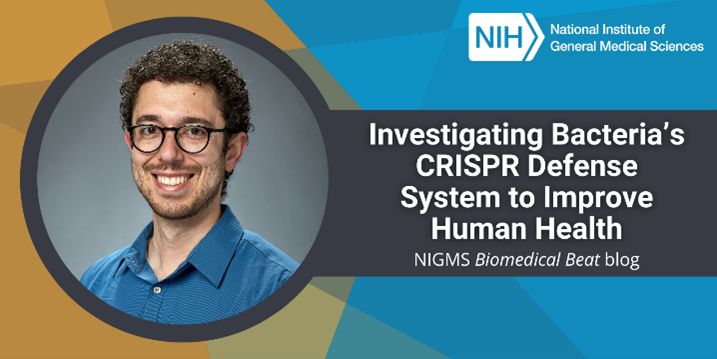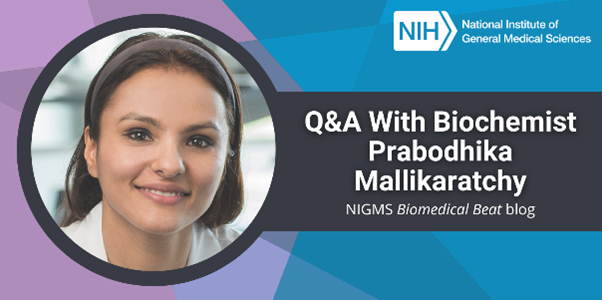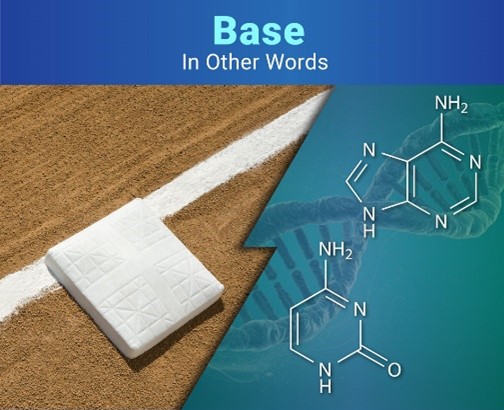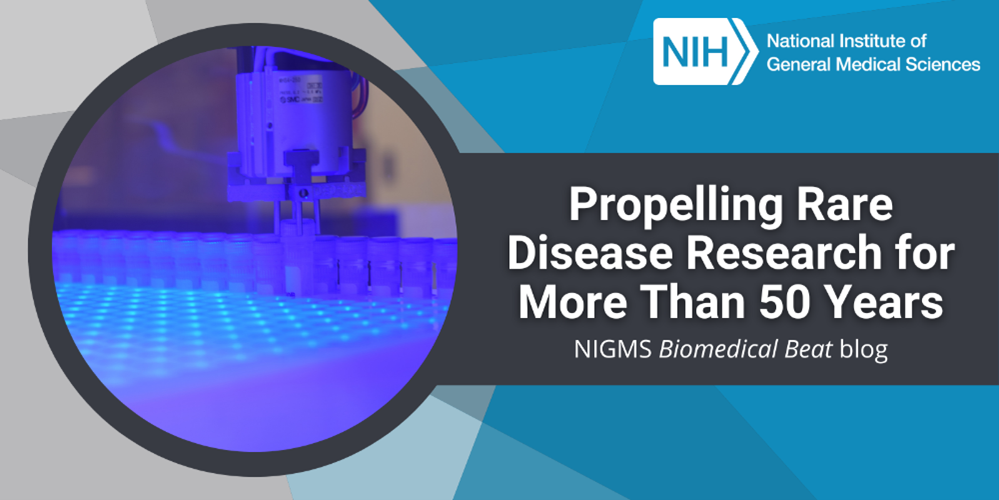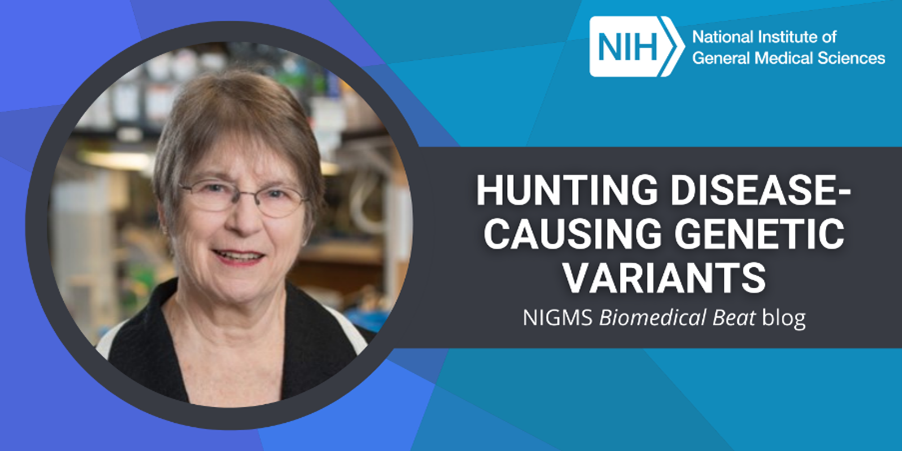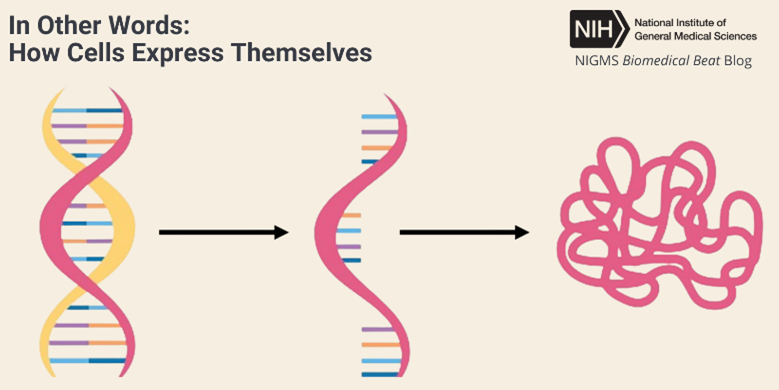Genetics is the study of genes and heredity—how traits are passed from parents to children through DNA. A gene is a segment of DNA that contains instructions for building one or more molecules that help the body work. Researchers estimate that humans have about 20,000 genes, which account for about 1 percent of our DNA. The remainder of the DNA plays a role in regulating genes, and scientists are researching other potential functions.
Continue reading “What Is Genetics?”Tag: DNA
Investigating Bacteria’s CRISPR Defense System to Improve Human Health
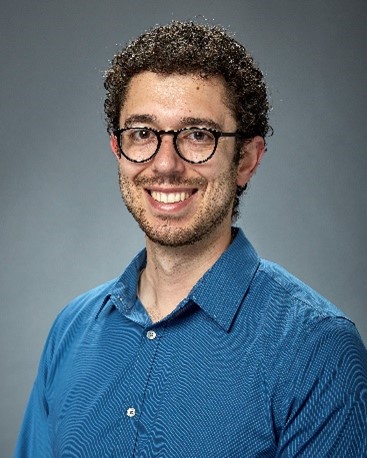
The earliest Andrew Santiago-Frangos, Ph.D., remembers being interested in science was when he was about 8 years old. He was home sick and became engrossed in a children’s book that explained how some bacteria and viruses cause illness. To this day, his curiosity about bacteria persists, and he’s making discoveries about CRISPR—a system that helps bacteria defend against viruses—as a postdoctoral researcher and NIGMS-funded Maximizing Opportunities for Scientific and Academic Independent Careers (MOSAIC) scholar at Montana State University (MSU) in Bozeman.
Becoming a Biologist
Although Dr. Santiago-Frangos wanted to become a scientist from a young age and always found biology interesting, by the time he was attending high school in his native country of Cyprus, he had developed a passion for physics and thought he’d pursue a career in that field. However, working at a biotechnology company for a summer changed his mind. “That experience made me want to dive into biology more deeply because I could see how it could be directly applied to human health. Physics can also be applied to human health, but, at least at that time, biology seemed to me like a more direct way to help humanity,” says Dr. Santiago-Frangos.
Continue reading “Investigating Bacteria’s CRISPR Defense System to Improve Human Health”Career Conversations: Q&A With Biochemist Prabodhika Mallikaratchy

“One of the biggest things I hope for in my career is that in 20 years, I still feel the same joy and enthusiasm for research and training that I feel now,” says Prabodhika Mallikaratchy, Ph.D., a professor in the department of molecular, cellular, and biomedical sciences at the City University of New York (CUNY) School of Medicine. Dr. Mallikaratchy talks with us about her career path, research on developing new immunotherapies and molecular tools using nucleic acids, and her belief in the importance of being passionate about your career.
Q: How did you first become interested in science?
A: Growing up in Sri Lanka, I was always a curious child. I remember being drawn to science and math, but there was no particular incident that sparked my interest. By the time I reached high school, though, I had become especially interested in chemistry.
Continue reading “Career Conversations: Q&A With Biochemist Prabodhika Mallikaratchy”In Other Words: Not All Bases Are in the Ballpark
You might first think about sports when you hear the word base, but not all bases are on the baseball diamond. In chemistry, a base is a molecule that reacts with an acid, often by accepting a proton from the acid or from water. Baking soda and dish soap are common bases.
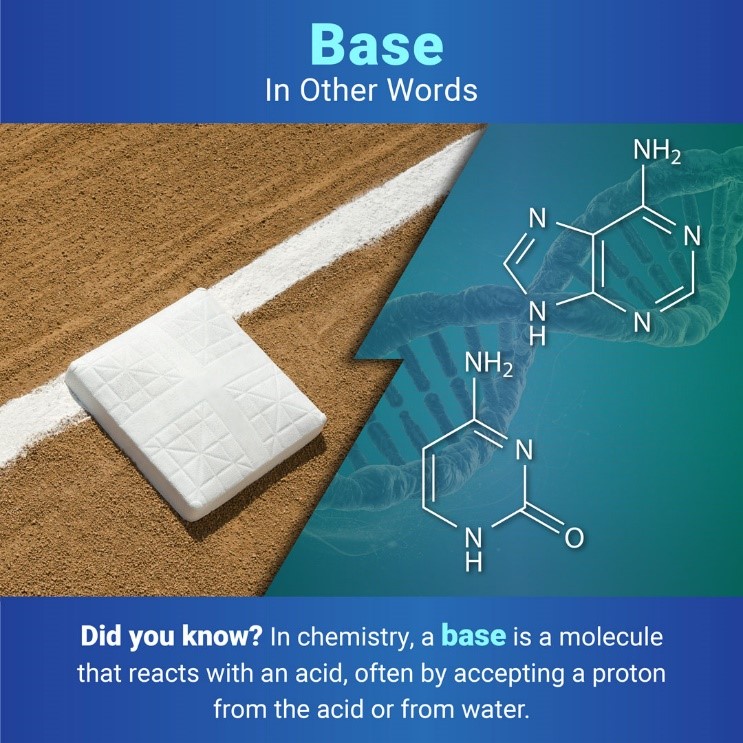
Propelling Rare Disease Research for More Than 50 Years

The year 2022 marked 50 years since the creation of the NIGMS Human Genetic Cell Repository (HGCR) at the Coriell Institute for Medical Research in Camden, New Jersey. The NIGMS HGCR consists of cell lines and DNA samples with a focus on those from people with rare, heritable diseases. “Many rare diseases now have treatments because of the samples in the NIGMS HGCR,” says Nahid Turan, Ph.D., Coriell’s chief biobanking officer and co-principal investigator of the NIGMS HGCR. She gives the example of a rare disease advocacy group who worked with the NIGMS HGCR to establish a cell line several decades ago. It was used to identify a gene associated with the disease, which aided in the development of five treatments that have received approval from the Food and Drug Administration.
Researchers have also studied NIGMS HGCR’s samples to help advance knowledge of basic biology and genetics, and even to support the development of a vaccine for a deadly virus.
Continue reading “Propelling Rare Disease Research for More Than 50 Years”Career Conversations: Q&A with Biochemist Alexis Komor
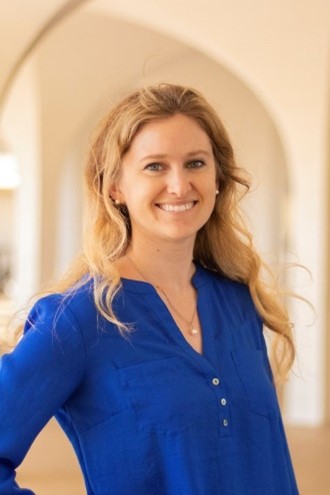
“DNA is an amazingly beautiful molecule, and it’s so important. Each of our cells has only one copy of DNA, and if it gets damaged, that messes up everything else in the cell,” says Alexis Komor, Ph.D., an assistant professor of chemistry and biochemistry at the University of California, San Diego (UCSD). Check out the highlights of our interview with Dr. Komor to learn about her scientific journey, research on DNA, and advice for students.
Q: How did you decide to study chemistry?
A: I really enjoyed math and science in middle and high school. When I applied to college, I knew I wanted to major in science over math because I felt like it was more relevant to what we experience on a day-to-day basis. I ultimately went into chemistry for a silly reason, but looking back now, I’m so very grateful that I did. Chemistry has this nice balance because it allows you to not only understand how things work on a molecular level but also see how those molecular workings relate to everyday phenomena—for example, understanding how DNA damage on a molecular level can lead to negative health outcomes.
Continue reading “Career Conversations: Q&A with Biochemist Alexis Komor”Hunting Disease-Causing Genetic Variants
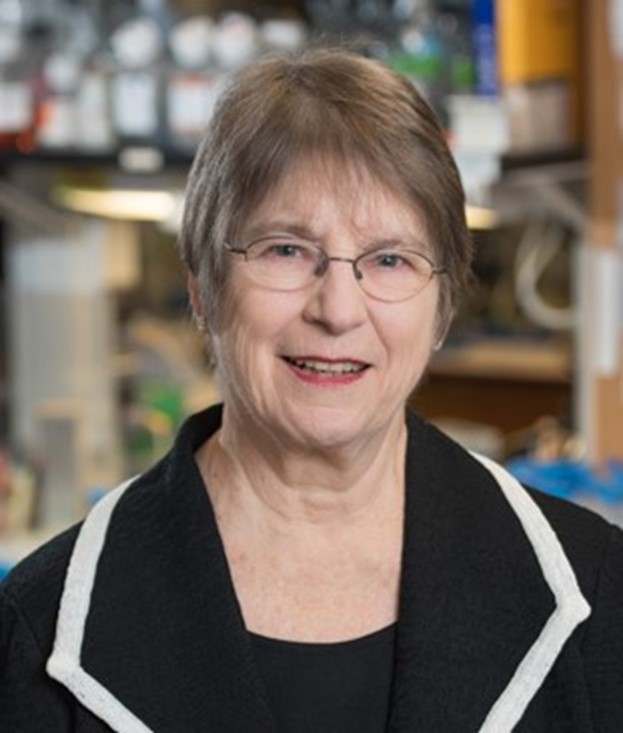
“In my lab, we’ve been gene hunters—starting with visible phenotypes, or characteristics, and searching for the responsible genes,” says Miriam Meisler, Ph.D., the Myron Levine Distinguished University Professor at the University of Michigan Medical School in Ann Arbor. During her career, Dr. Meisler has identified the functions of multiple genes and has shown how genetic variants, or mutations, can impact human health.
Becoming a Scientist
Dr. Meisler had a strong interest in science as a child, which she credits to “growing up at the time of Sputnik” and receiving encouragement from her father and excellent science teachers in high school and college. However, when she started her undergraduate studies at Antioch College in Yellow Spring, Ohio, she decided to explore the humanities and social sciences. After 2 years of sociology and anthropology classes, she returned to biomedical science and, at a student swap, symbolically traded her dictionary for a slide rule—a mechanical device used to do calculations that was eventually replaced by the electric calculator.
Continue reading “Hunting Disease-Causing Genetic Variants”In Other Words: How Cells Express Themselves
When you encounter the word expression, you may think of a smile, a grimace, or another look on someone’s face. But when biologists talk about expression, they typically mean the process of gene expression—when the information in a gene directs protein synthesis. Proteins are essential for virtually every process in the human body.
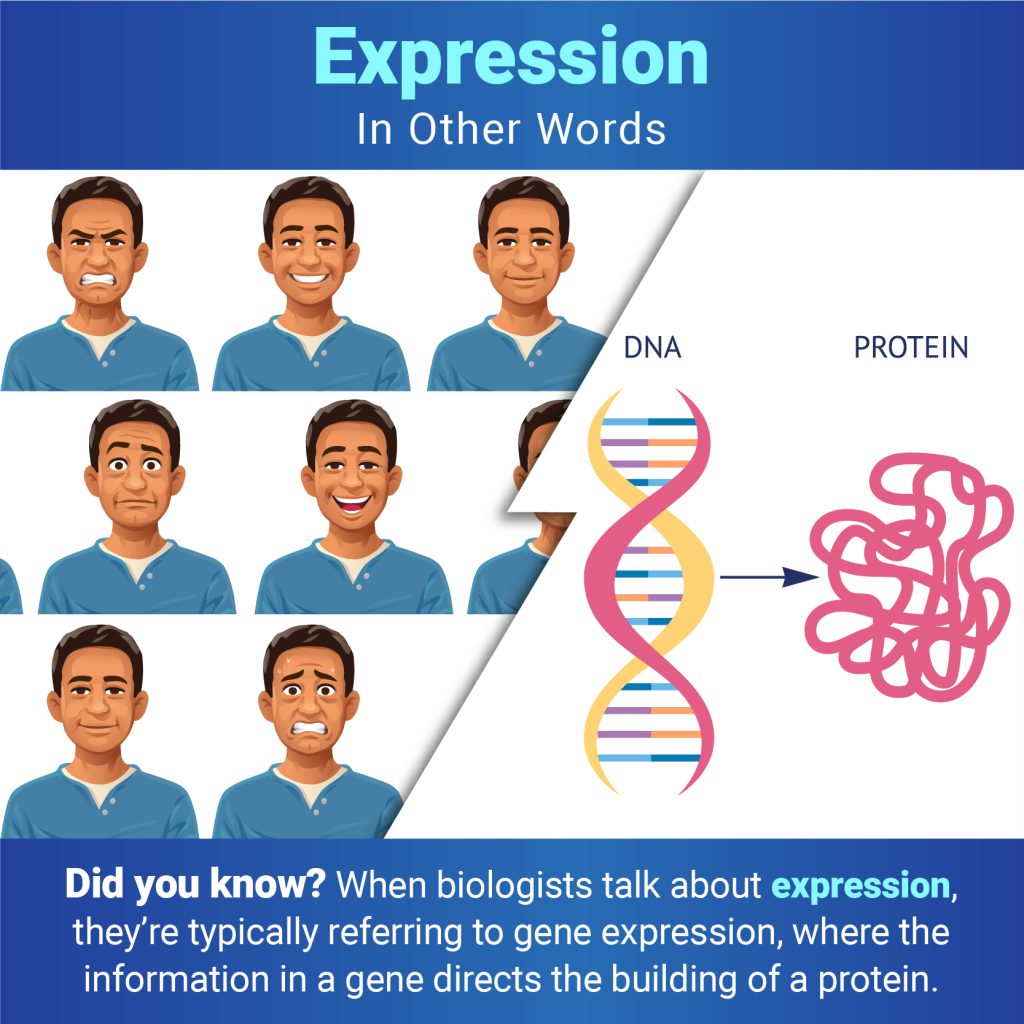
In Other Words: Translation Isn’t Only for Languages
In everyday use, most people understand translation to mean converting words from one language to another. But when biologists talk about translation, they mean the process of making proteins based on the genetic information encoded in messenger RNA (mRNA). Proteins are essential for virtually every process in our bodies, from transporting oxygen to defending against infection, so translation is vital for keeping us alive and healthy.
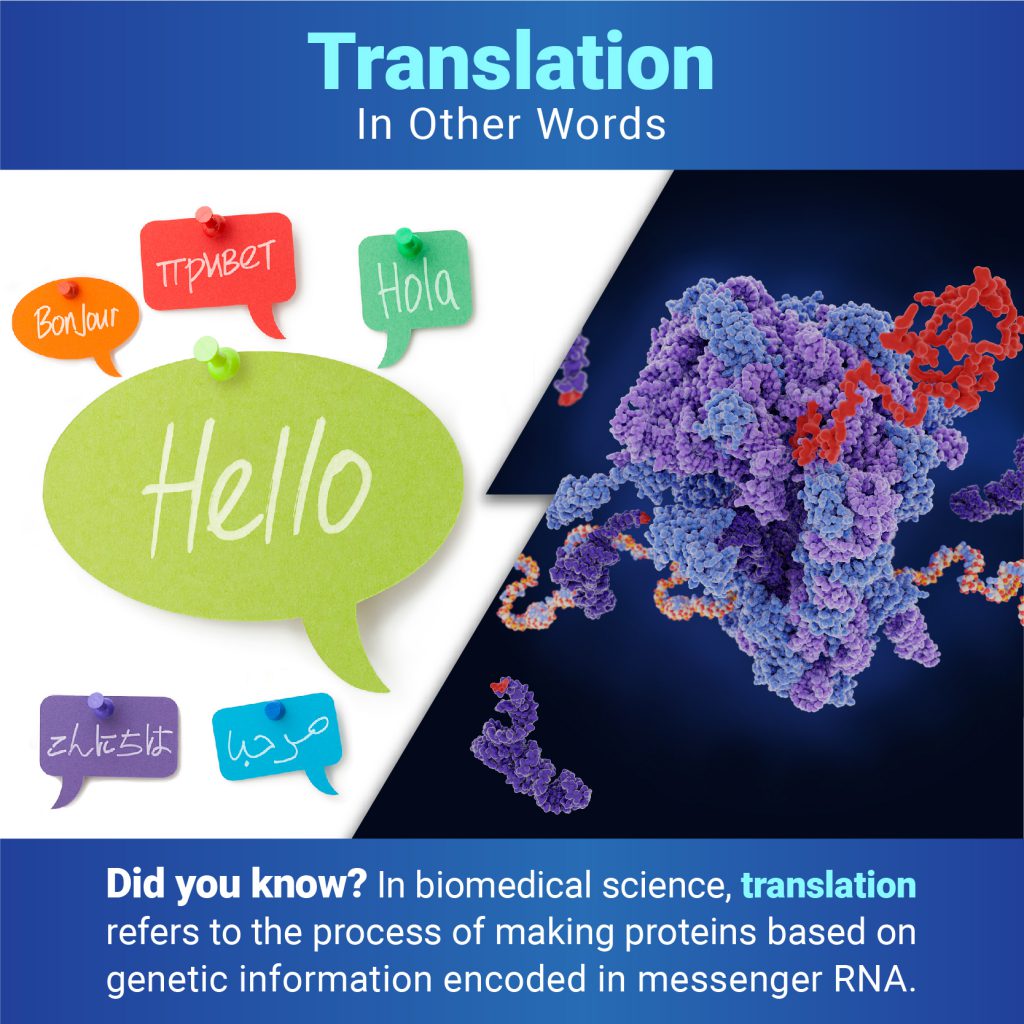
Quiz: Are You a Genetics Genius?
Genes are segments of DNA. They contain instructions for building one or more molecules that help the body work. Researchers in the field of genetics study genes and heredity—how certain traits are passed from parents to their offspring through DNA. NIGMS supports many scientists who investigate the genetics of people and research organisms to better understand human health and disease.
Take our quiz below to test how much you know about genetics. For more quizzes and other fun learning tools, visit our activities and multimedia webpage.
Continue reading “Quiz: Are You a Genetics Genius?”


